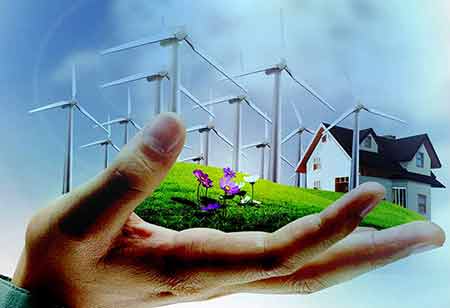Thank you for Subscribing to Energy Business Review Weekly Brief
Why is Improved Operational Flexibility Important for Gas Turbines?
Due to excellent efficiency, reliability, operational flexibility, fuel flexibility, and low-emission power sources,

By
Energy Business Review | Saturday, January 15, 2022
Stay ahead of the industry with exclusive feature stories on the top companies, expert insights and the latest news delivered straight to your inbox. Subscribe today.
Modern gas turbines must have great operational flexibility to improve energy efficiency and performance.
Fremont, CA: Due to excellent efficiency, reliability, operational flexibility, fuel flexibility, and low-emission power sources, gas turbines have become a hallmark of the modern power system. However, the global gas technology industry admits that if gas turbines are to remain relevant in the face of the expected proliferation of renewables, energy storage, and decarbonized gas—including hydrogen, ammonia, synthetic methane, and other green fuels—research and development (R&D) to enable emerging applications must be a high priority.
Hybridization of gas turbine technology with renewables and storage and retrofitting them to ensure they can combust large volumes of hydrogen and other renewable fuels will be future gas turbine uses. On the other hand, modern gas turbines must have higher energy efficiency and performance, as well as greater operational flexibility. Finally, future systems must strive for zero-emissions or integrate carbon capture, utilization, and storage (CCUS) solutions, in addition to reducing carbon output at existing assets.
Improved operational flexibility for gas turbines
While the shifting power environment will necessitate reliance on open-cycle gas turbines (OCGTs) or combined cycle gas turbines (CCGTs) for flexible backup in the near future, gas turbine development must support greater capabilities for fast load shifts in the long run. "Power plants based on GT-derived technology will be required to start-up and shut down fast, adapt to load fluctuations, and minimize the impact on component life consumption and emissions as a contrast to partial dispatchability," the paper states. This will necessitate examination at both the component and system levels.
Check Out This : Life Sciences Review
Fast cycling, on the other hand, will necessitate advancements in combustion technology to handle pollutants. According to the report, there is a "probability of severe harm, such as damage accumulation on hot gas path components, degradation of thermal barrier coatings, creep-fatigue of turbine buckets, cracking and degradation of combustor," so design changes addressing material and component fatigue should be a priority. This is exacerbated by new obligations to lower capital and operating costs in order to maintain gas turbines competitive in a competitive market. The entire plant, including the bottoming cycle, will require R&D. Organic Rankine Cycles and carbon dioxide (CO2)–based cycles (either pure or with dopants, Rankine and Brayton) with various cycle topologies are emerging rivals to the basic water-steam bottoming cycle so far. Digital tools, such as enhanced instrumentation and new sensor technologies, are already helping to increase operational flexibility.






